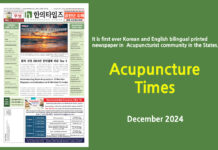- Mikyung Kim(1Department of Internal Medicine, College of Korean Medicine, Sangji University), Chang-ho Han(Department of Internal Medicine, College of Korean Medicine, Dongguk University)
- J Korean Med. 2021;42(4):75-101
1. Data sources and search strategy
1) Data sources
Considering that the primary studies included in the previous systematic review on this topic6) have been published since 2000, we searched the following databases from 1 January 2000 to 16 February 2021: English (PubMed, EMBASE, and Cochrane Library), Chinese (China Academic Journals Full-text Database), and Korean databases (Science On, Korean Studies Information Service System, and Oriental Medicine Advanced Searching Integrated System). Twelve major Korean traditional medicine journals were also manually searched for relevant articles.
2) Search strategy
The search terms were used in the form of a combination of (“stroke” OR “cerebral infarction” OR “cerebral hemorrhage” OR “cerebrovascular disorder” OR “cerebrovascular accident” OR “apoplexy” OR “brain ischemia”) AND (“cupping”), but modified to suit the condition of the search platform of each database in Korean, Chinese, and English (Supplement 1). There were no language restrictions. In addition to articles published in academic journals, thesis and conference abstracts were also included. Hand searches were also conducted for related references. This study was conducted according to the Preferred Reporting Items for Systematic reviews and Meta-Analyses 2020 (Supplement 2 & 3).
2. Study selection and eligibility criteria
1) Study selection
MK and CH screened the retrieved records. The selection of potentially relevant articles for this study was decided after reading the abstract or full text of the articles. The two authors worked independently and any disagreement was resolved by discussion.
2) Types of studies
Parallel-design RCTs that investigated the effectiveness and safety of cupping therapy in stroke patients were selected. Observational studies, qualitative studies, animal studies, and literature reviews were not included. Clinical studies that were nonrandomized studies, crossover-design studies, before-and-after studies, or studies without a control group in comparison to the cupping therapy group were also excluded.
3) Types of participants
Studies that recruited patients who were confirmed to have stroke by clinical signs and symptoms supported by brain imaging were included. There were no other restrictions, such as age, sex, stroke type, or stroke stage. Studies including nonstroke patients were excluded. When more than one study used duplicated data were obviously from the same population, only the one study that provided more information was selected.
4) Types of interventions
We defined cupping therapy as an intervention that provides negative pressure on the skin by suctioning air inside a cup-shaped device (mainly made of plastic, glass, or bamboo).4) Generally, cupping therapy is classified as wet cupping or dry cupping5,6). Wet cupping refers to cupping with bloodletting puncture. In other words, it involves pricking the skin of the cupping site before suction and subsequently drawing blood in addition to cupping. Dry cupping involves only cupping without bleeding. This study included both types of cupping.
5) Types of control interventions
All types of control interventions other than cupping therapy were allowed as control interventions, including active control, sham or placebo control, and no cupping therapy. Therefore, both A versus B and A+B versus B type studies were included.
6) Types of outcome measures
All types of clinical outcomes that evaluated the therapeutic effect and safety of cupping therapy for stroke patients were allowed. Reporting of the response rate based on predefined criteria was also allowed. Outcomes showing the add-on effect of cupping therapy were also allowed. However, cases that provided only the combined effects of cupping plus other interventions in which the effects of cupping therapy could not be identified were excluded (e.g. cupping + acupuncture, cupping + herbal medicine, and cupping + bloodletting of noncupping sites). When the outcomes were measured multiple times after the completion of planned treatment, the first measured value was preferentially adopted.
3. Data extraction
One of the authors (MK) extracted data, and another one (CH) cross-checked the data. Disagreements were resolved by discussion between the two reviewers. The extracted data were as follows: number of participants in the final analysis, time-to-onset of stroke, stroke conditions, types and details of intervention, types of control intervention, outcome measures, and
findings of each study.
4. Data synthesis
Meta-analysis was conducted when two or more studies provided quantifiable values. In the case of A versus B designs, data were combined when there were two or more studies using the same endpoints and control interventions. In the case of A+B versus B designs, data were combined when there were two or more studies using the same endpoints. Cochrane Collaboration
software (Review Manager (RevMan) Version 5.4 for Windows. The Cochrane Collaboration, 2020) was used for data synthesis and constructing forest plots. For continuous variables, the mean difference (MD) and its 95% confidence interval (CI) were calculated using the inverse variance method. However, when the measurement tools were not identical across studies, the standard mean difference (SMD) was calculated. For binomial variables, odds ratios (ORs) and 95% CIs were calculated using the Mantel-Haenszel method. Heterogeneity among trials was evaluated using Higgins’ I2 test7). The fixed effect model was preferentially adopted, but a random effect model was selected when the stroke conditions of the participants were not homogeneous or the statistical heterogeneity between studies was considerable (I2 value ≥ 75%)8). When heterogeneity was substantial, subgroup analysis was considered. Subgroup analysis was also performed based on the type of cupping therapy (dry or wet cupping). When data from 10 or more studies were combined, the possibility of publication bias was assessed using a funnel plot.
5. Risk of bias (RoB) assessment
The Cochrane Collaboration tool for RoB in RCTs (RoB 2) was used to assess the methodological quality of the studies included in the meta-analysis. The RoB 2 consists of five domains: randomization process, deviations from intended interventions, missing outcome data, measurement of the outcome, and selection of the reported results9). Based on the evaluation results for each domain, the overall RoB for each study was judged to be one of the three levels including low, high, or some concerns. The two authors independently evaluated the RoB of individual studies, and any disagreements were resolved through discussion.
6. Level of evidence
The certainty in evidence from the meta-analysis was assessed by the methodology of the grading of recommendations, assessment, development, and evaluation (GRADE)10). Meta-analysis data were imported into GRADEpro, web-based software, and the quality of evidence was rated based on the following criteria: study design, RoB, inconsistency, indirectness, imprecision, and other considerations including publication bias. Synthesizing the ratings of each criterion, the final level of evidence was decided to be high, moderate, low, or very low10).
References
5. Al-Bedah, A. M., Aboushanab, T. S., Alqaed, M. S., Qureshi, N. A., Suhaibani, I., & Ibrahim, G., et al. (2016). Classification of cupping therapy: a tool for modernization and standardization. Journal of Complementary and Alternative Medical Research, 1(1), 1-10. doi: 10.9734/JOCAMR/2016/27222.
6. Lee, M. S., Choi, T. Y., Shin, B. C., Han, C., & Ernst, E. (2010). Cupping for stroke rehabilitation: a systematic review. Journal of the Neurological Sciences, 294(1-2), 70-73. doi: 10.1016/j.jns.2010.03.033.
7. Higgins, J. P., & Thompson, S. G. (2002). Quantifying heterogeneity in a meta-analysis. Statistics in Medicine, 21(11),1539-1558. doi: 10.1002/sim.1186.
8. Higgins, J. P., Thomas, J., Chandler, J., Cumpston, M., Li, T., & Page, M. J., et al. (2019). Cochrane handbook for systematic reviews of interventions (2nd ed.). John Wiley & Sons.
9. Sterne, J. A., Savović, J., Page, M. J., Elbers, R. G., Blencowe, N.S., & Boutron, I., et al. (2019). RoB 2: a revised tool for assessing risk of bias in randomised trials. BMJ, 366.
doi: 10.1136/bmj.l4898.
10. Guyatt, G. H., Oxman, A. D., Schünemann, H. J., Tugwell, P., & Knottnerus, A. (2011). GRADE guidelines: A new series of articles in the Journal of Clinical Epidemiology. Journal of Clinicial Epidemiology, 64(4), 380-382. doi: 10.1016/j.jclinepi.2010.09.011.


































